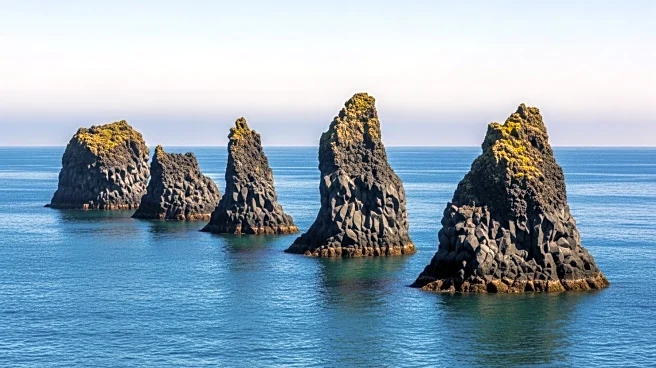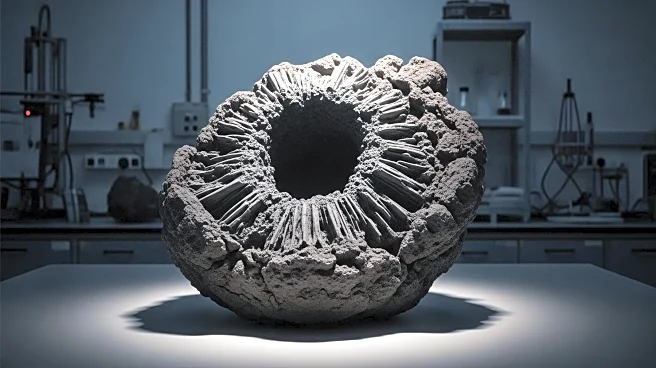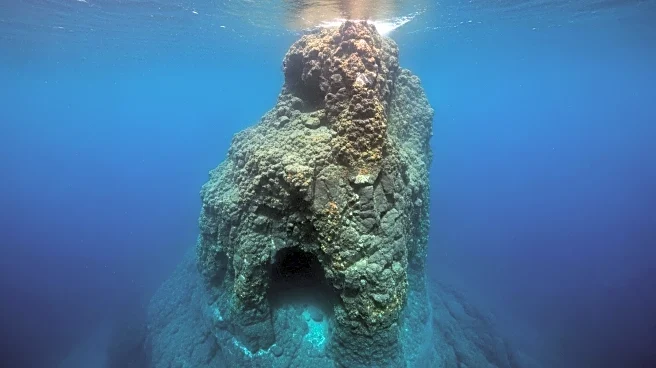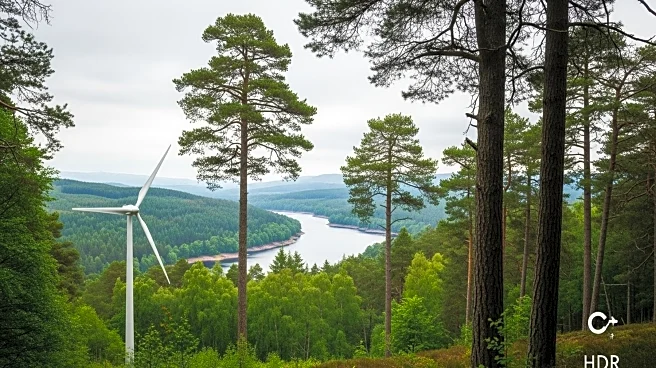What's Happening?
Researchers from the University of Cambridge have made significant strides in understanding a volcanic phenomenon that occurred approximately sixty million years ago across the North Atlantic. The study, led by geophysicist Raffaele Bonadio, focuses on the Icelandic mantle plume, a hot rock fountain originating from Earth's core-mantle boundary. This plume was responsible for extensive volcanic activity stretching from Scotland and Ireland to Greenland. The research suggests that variations in the thickness of tectonic plates in the region facilitated the widespread distribution of volcanic activity. Using seismic tomography and thermography, the team mapped Earth's interior beneath Britain and Ireland, revealing that areas with thinner lithosphere were more prone to volcanic formations. This discovery provides insights into the historical volcanic activity and its influence on the seafloor and ocean circulation, which have implications for climate patterns.
Why It's Important?
The findings from this research have significant implications for understanding the geological history and current seismic activity in the North Atlantic region. By identifying the correlation between tectonic plate thickness and volcanic activity, scientists can better predict seismic hazards and assess geothermal energy potential. The study also highlights the role of mantle plumes in shaping Earth's geological features and influencing climate over time. This research could lead to advancements in geothermal energy exploration, particularly in areas with thinner lithosphere, offering sustainable energy solutions. Additionally, understanding the historical impact of mantle plumes on ocean circulation can provide insights into past climate changes and help model future climate scenarios.
What's Next?
The research team plans to expand their seismic thermography methods to assess geothermal energy resources globally. By collaborating with international colleagues, they aim to map potential geothermal sites using the techniques developed in this study. This could lead to increased exploration and utilization of geothermal energy, contributing to renewable energy initiatives. Furthermore, the study's findings may prompt further investigation into the role of mantle plumes in other regions, potentially uncovering new geological insights. The ongoing research could also influence policy decisions regarding energy resource management and climate change mitigation strategies.
Beyond the Headlines
The study raises important questions about the ethical and environmental implications of geothermal energy exploration. While geothermal energy is a renewable resource, its extraction can impact local ecosystems and communities. Researchers and policymakers must consider these factors when developing energy strategies. Additionally, the study underscores the importance of interdisciplinary collaboration in addressing complex geological and environmental challenges. By integrating geophysics, climate science, and energy research, scientists can develop comprehensive solutions to global issues.












